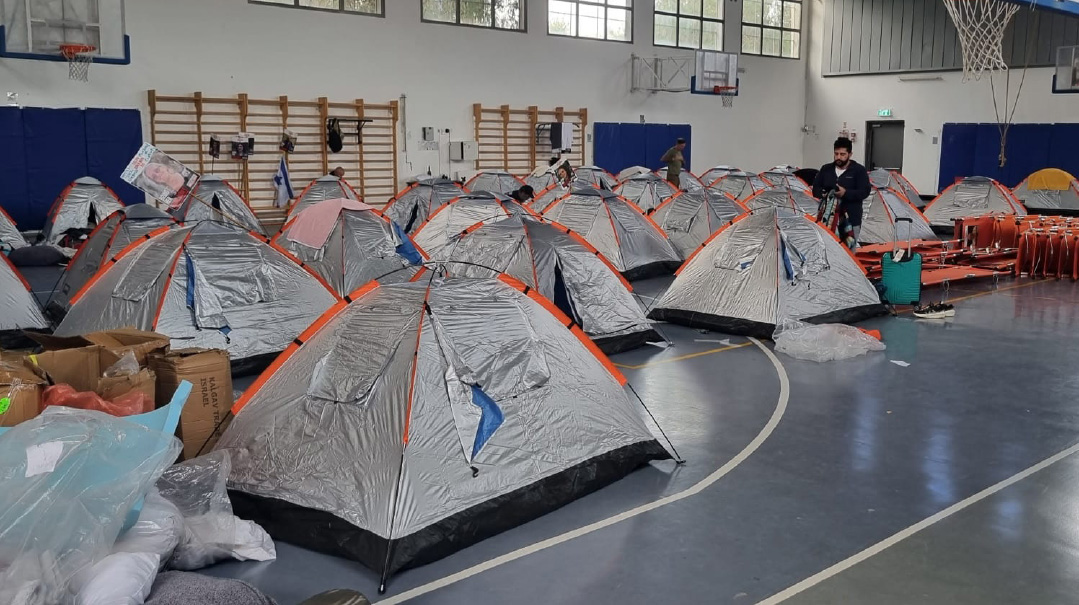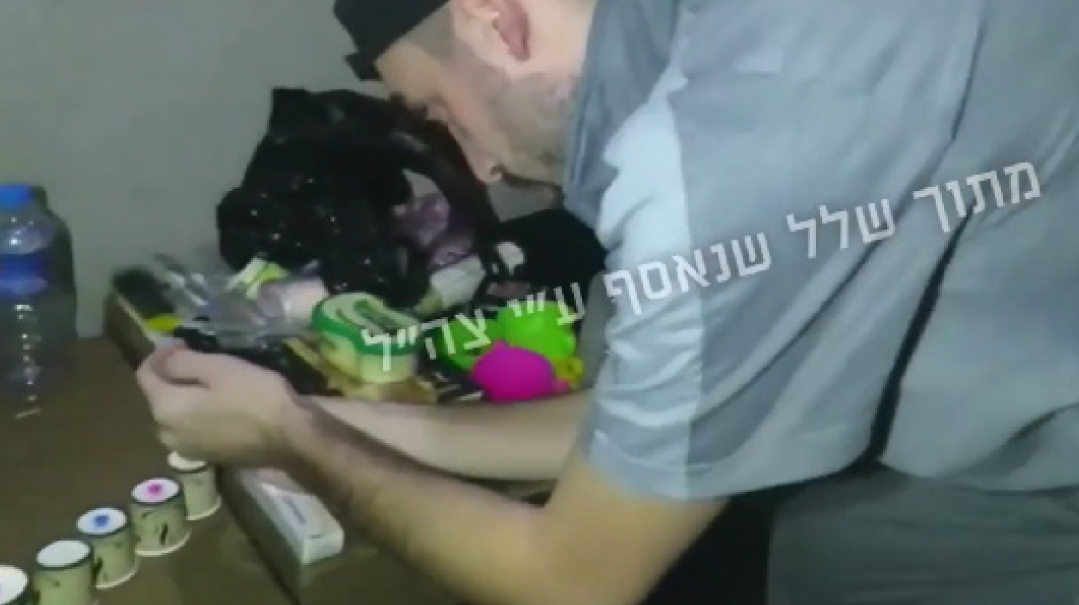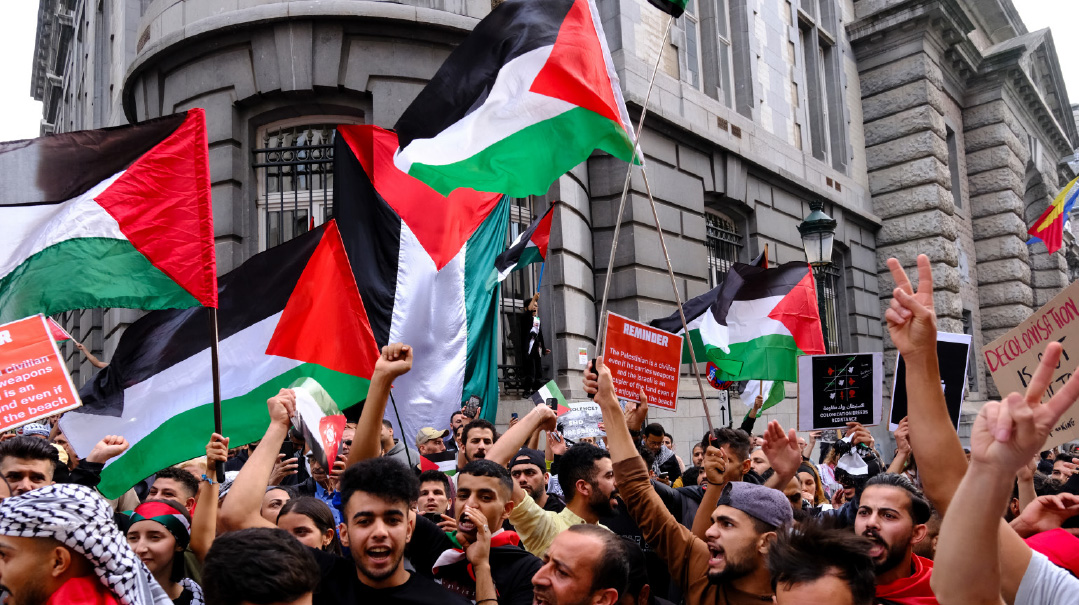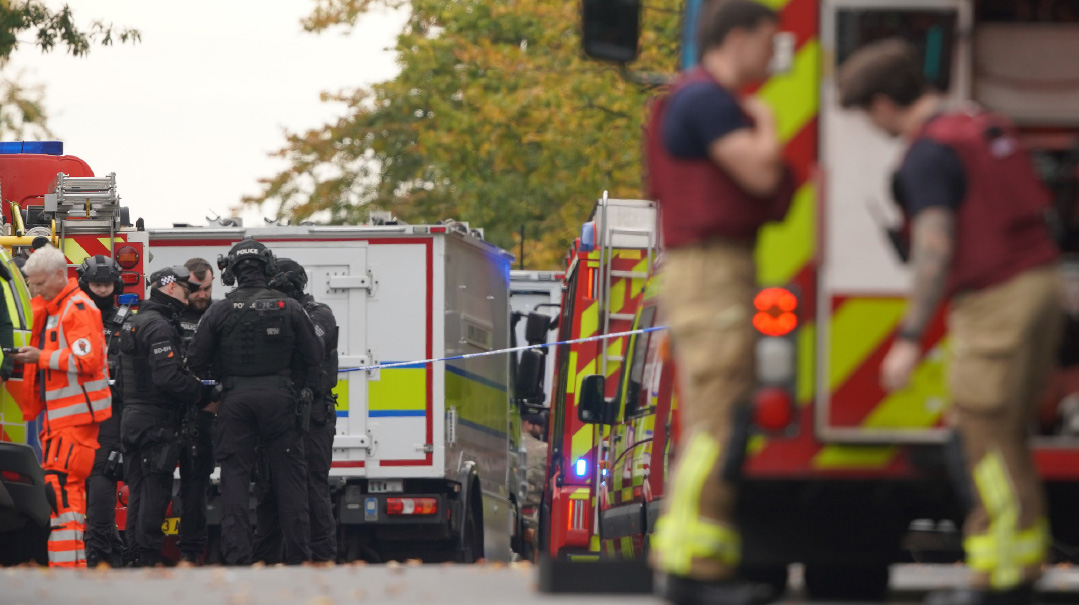Behold, a People

For the first time in decades, there is now one Jewish world

1
ITwas human misery, laid out with military precision. Last Friday, my wife and I found ourselves at 6:30 a.m. looking through the door of a sports hall in Beit Shemesh that had been converted into a makeshift campground. Row after row of one-man tents housed family members of the Hamas hostages. They were in the middle of a days-long march from the Gaza border to downtown Yerushalayim, to raise awareness of their cause.
Slowly, the marchers stumbled from their sleeping bags with that puffy-faced, unrested look peculiar to those who’ve slept in a tent. As they degummed their eyes, they were greeted by a welcome sight: coffee, breakfast, and a warm hello from a dozen or so volunteers in day-glo shirts. Unlike many of the other stops on their journey, these were religious volunteers — mostly Anglos — brought together by Ezrat Achim, a Beit Shemesh organization that is a one-stop shop for many medical and social services.
The brief encounter was a stark reminder of the pain that these people are still going through. There was a university student whose fiancée’s parents are somewhere inside Hamas’s tunnels, fate unknown; a woman whose 23-year-old daughter was captured from the Nova festival; an elderly, Baghdad-born woman who was simply journeying to identify with the cause.
Five months into the war, most Israelis have moved on to a grim new normal. But like Yaakov Avinu, who couldn’t find comfort because Yosef was still in the land of the living, the hostage families are suspended in a twilight zone: They can neither mourn properly nor hope properly because their loved ones have simply been swallowed alive.
Given the left-leaning identity of many of the hostage families, and the demand for a deal at any cost, the protests have become politicized, with some on the right viewing the movement as a tool to bring down the government by other means. But five minutes with the caravan of human misery is a reminder that for most participants, this is not about politics. These are simply people living a nightmare, doing what any parents would do for their children.
One encounter stands out for what it says about the rigid compartmentalization of Israeli society. As we helped fold their tents and directed the marchers to coffee and breakfast, we mentioned that the initiative had been organized by Ezrat Achim’s indefatigable founder, Rabbi Avraham Kopp. His visibly chassidish exterior had a couple of the marchers doing a double-take.
“Really?” asked one woman. “I have to cry.”
“We’re really one people,” said another mother, moved by the display of caring from utter strangers.
In a country where secular and chareidi interact more through media stereotypes than in person, tragedy and the acts of chesed that follow are often the only way to bridge that gap.
2
“We are joyful and overcome with the birth of our son,” read the WhatsApp text next to a heart emoji that was doing the rounds last week, and signed “Yedidiah Hashem yikom damo and Meital Eliyahu.”
For a bittersweet simchah notice, it was hard to beat. Yedidiah Eliyahu — a long-time talmid of the Hesder yeshivah in Tzfas — was a sergeant in the Combat Engineers reserves. Like thousands of others, he reported for duty immediately on Motzaei Simchas Torah. Like hundreds of others, he never returned home. He volunteered to enter northern Gaza in the first wave of Israel’s attack, and in the fierce fighting that ensued, his Puma armored personnel carrier was hit.
In a video posted a couple of weeks ago, his father Rav Yosef spoke movingly of Yedidiah’s determination to avenge the Jewish People’s disgraced honor. “He went there to make a kiddush Hashem by defeating our enemies, to restore the honor that our enemies’ victory on Simchas Torah had disgraced.” In a mixture of smiles and tears, Yedidiah’s wife Meital recalled how the father of two young children burned to fulfill the mitzvah of defending Am Yisrael. “I’m living the dream,” he would respond by text when asked how he was doing in combat.
Yedidiah Eliyahu’s story is just a drop in the ocean of the spiritual strength that has poured from the dati-leumi public over the last five months. They have volunteered and died in disproportionate numbers. At their levayos, the bereaved have repeated the same message over and over again: that their sons and husbands died fighting to defend Klal Yisrael.
These are men like Yedidiah who willingly gave themselves up al kiddush Hashem. They’re a generation of soldiers who stole time in Gaza to keep up with daf yomi and daven Shacharis, and fought as they lived — to bring honor to Hashem’s name.
This is the great hour of the national-religious world, but, on the defensive yet again about the draft law which threatens the yeshivos, the chareidi world in Israel and beyond has been slow to recognize the unfolding story. We should call it what it is: authentic Jewish heroism, both physical and spiritual.
Acknowledging that does nothing to alter the fact that the Torah learned in yeshivos and kollelim is the guarantor of Jewish national survival. Defense Minister Yoav Gallant said last week that “without physical existence, there’s no spiritual existence.” It’s a materialistic worldview that we’re taught to see in reverse. Without the Torah, there is no Jewish People.
But even as the Torah world steers its own independent path, we can recognize the gadlus hanefesh on display in the next beis medrash.
3
Twice in the last few weeks, I’ve walked down the ramp in Ben-Gurion Airport leading to departures, and twice the same sad thought has occurred to me. In place of the sunny images of Israeli life that the country normally displays to its departing visitors, travelers now walk past photos of the Gaza captives. It’s a depressing reminder that the country’s national story is now one of war and tragedy.
But while that’s certainly true, a perceptive visitor will see another storyline. Like the proverbial non-Jew who puts on a yarmulke when he has a flat tire, knowing that some Jew will stop to help, outsiders know that when the chips are down, Jewish unity asserts itself.
And here’s the amazing thing. It’s been decades since the Jewish body politic has done anything to give meaning to the term “Klal Yisrael.” In what substantive way are we really an am, or klal?
When two million religious Jews celebrate the daf yomi mega-Siyum every seven years, secular Jews are simply oblivious. When they in turn celebrate a Jewish Hollywood actor or Olympian, the reverse is true. So when do we all collectively feel or experience the same thing at the same time?
That was all pre-October 7. Ask any Jew anywhere how he is, and there will be a hint of reserve. “Given the situation, okay,” will be the answer — a hesitation that only Jews will truly understand.
For the first time in many decades, there is now one Jewish world, a certain minimal sense of Jewish consciousness. “Behold, a people that dwells alone,” said Bilaam, looking at the serried ranks of tents in the desert.
From the tents of Beit Shemesh and the battlegrounds of Gaza, to anywhere that Jews are saying Tehillim after Shacharis, a hazy, faint outline of that people is now on display.
(Originally featured in Mishpacha, Issue 1002)
Oops! We could not locate your form.







